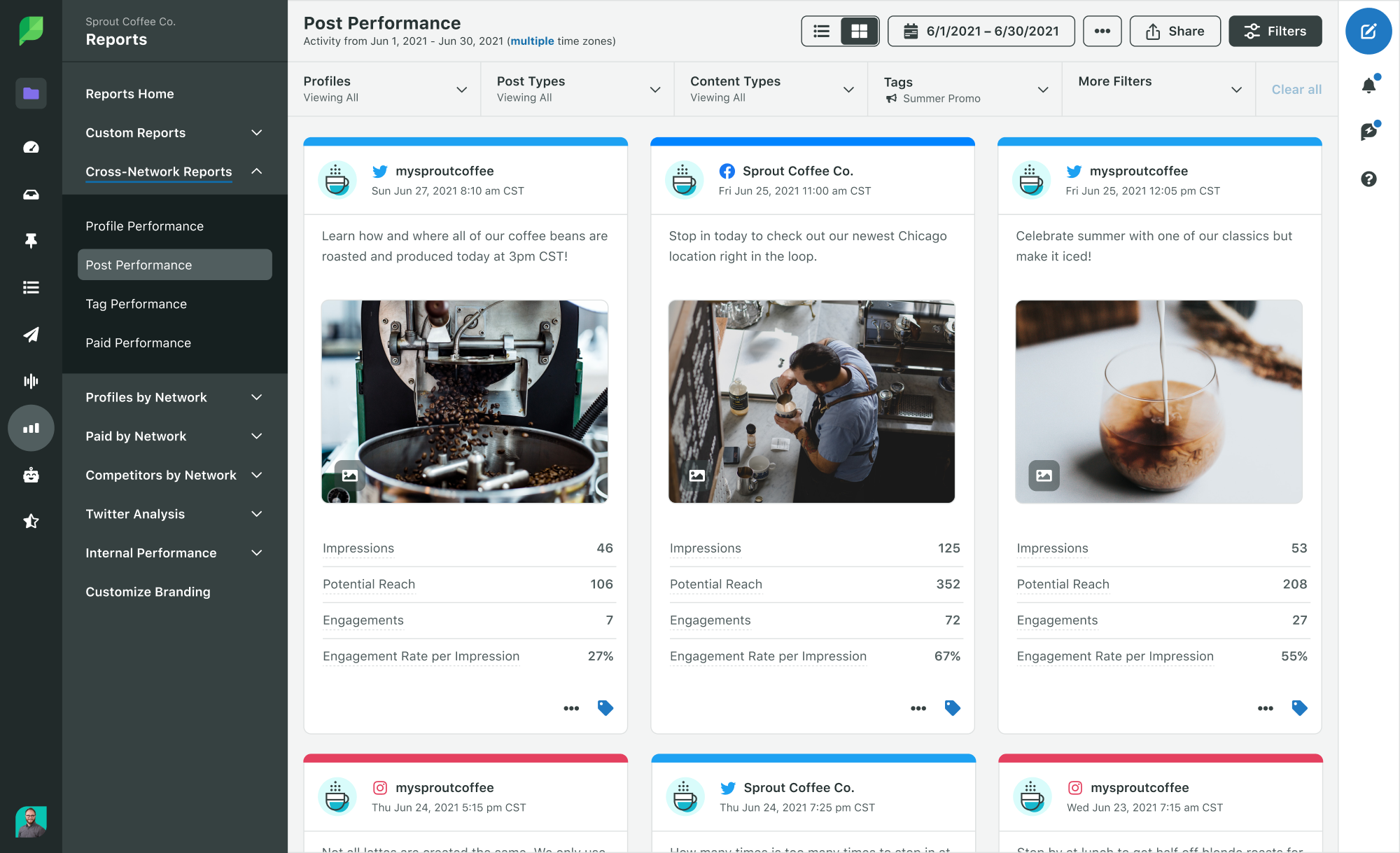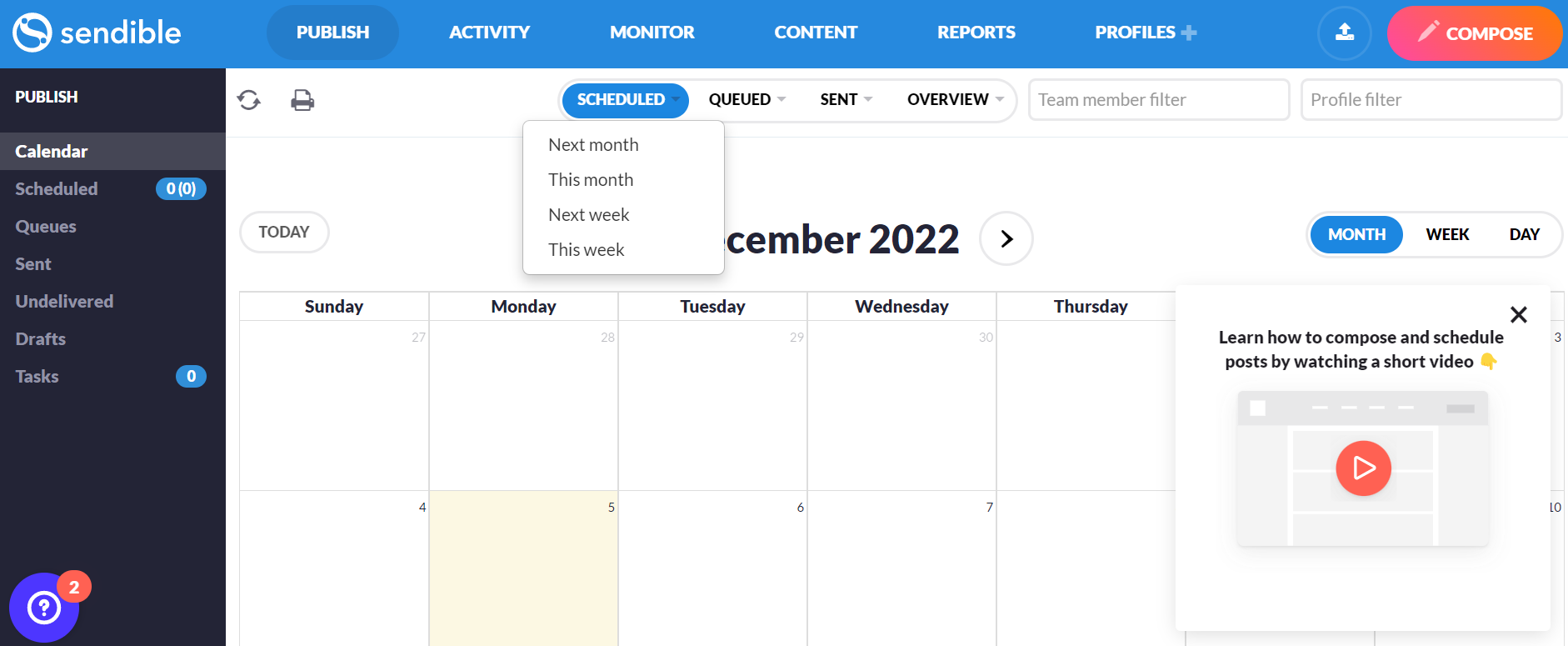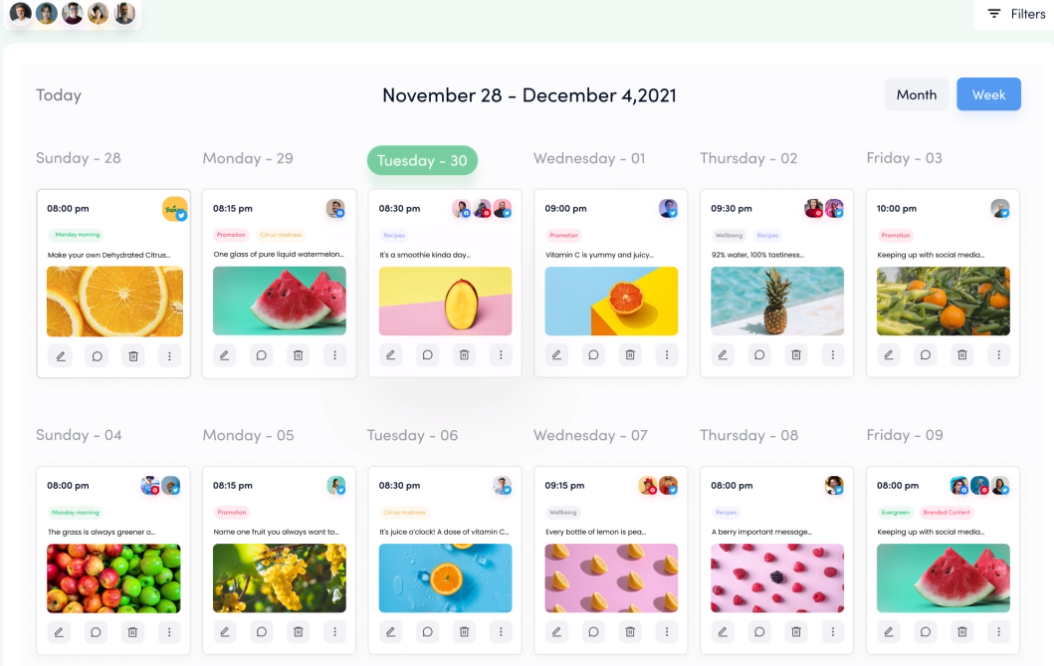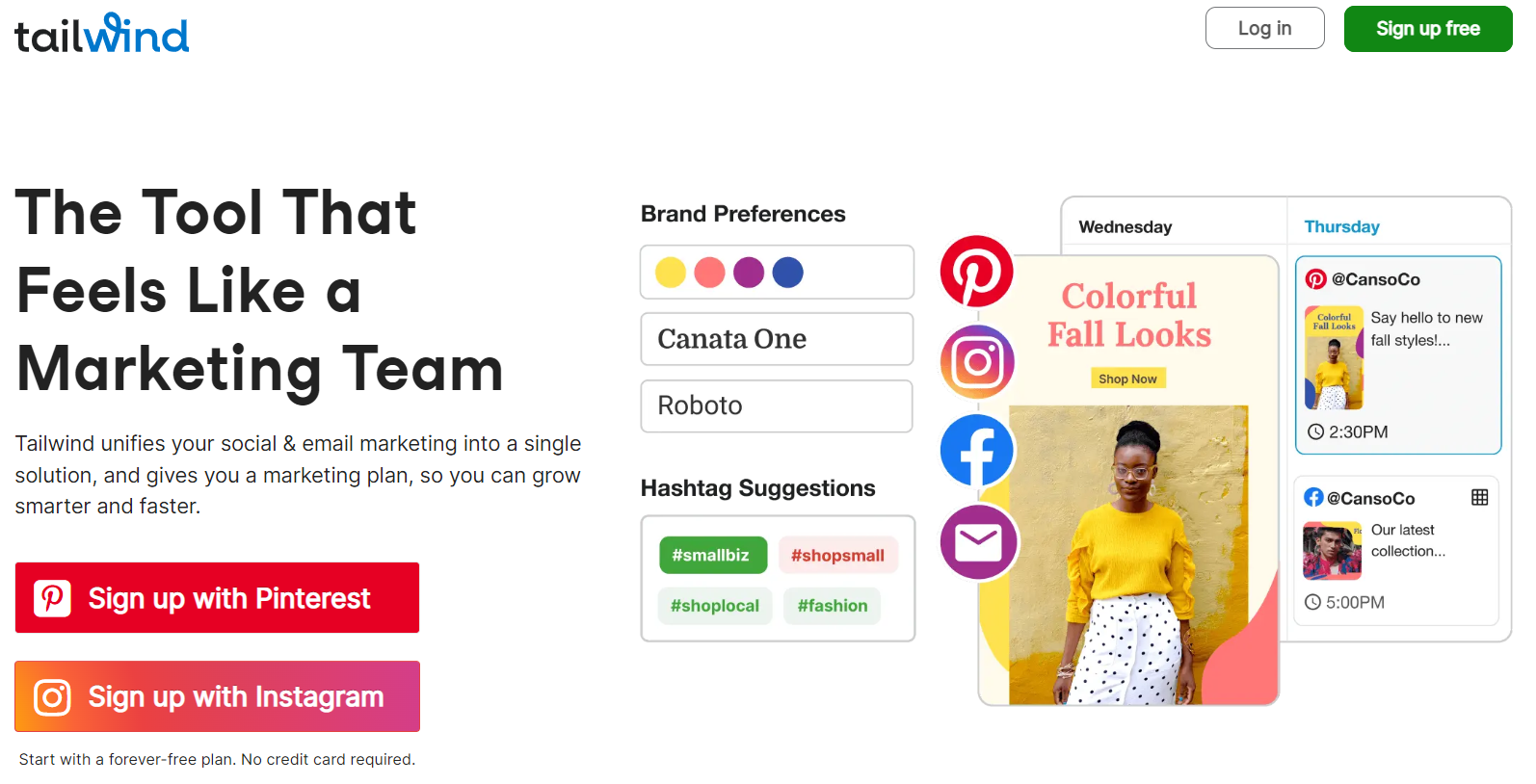When you hear the phrase “work smarter, not harder,” what comes to mind?
Is it ways you could automate processes? Breaking down silos at your company? Promoting seamless cross-functional collaboration?
If you answered yes, your current project management strategies and corporate communications tools might need an upgrade. It’s time to invest in project management software to help you plan, coordinate and execute your team’s work at a higher level.
In this article, we share why you should use project management software, what to look for as you consider your options and the 14 best project management tools for different teams.
The benefits of project management software

Project management software helps keep teams organized and on track. It streamlines processes and ensures they’re followed, empowering employees to work smoothly and efficiently.
From daily, ongoing tasks to larger projects, a project management tool takes the guesswork and frustration out of collaboration so teams can focus on doing their best work. With project management tools, multiple teams and departments are enabled to join forces, allocate work, illuminate timelines and simplify approvals.
What to look for in a project management tool
Ultimately, your ideal project management software should fit your company’s specific needs. Consider your budget, team size, file storage requirements, security demands and existing integrations in your tech stack when assessing options. For example, a tool that works for a growing team of five might not be appropriate for a team of 1,000.
The most common features of a project management tool include:
- Time tracking
- Reporting
- Scheduling and planning
- Budget tracking
- Document storing and sharing
Here’s our list of the leading project management software broken down by use case:
- Best project management software for cross-functional collaboration
- Project management software for agencies
- Best project management tools for enterprise companies
Best project management software for cross-functional collaboration
monday.com
monday.com is a standard tool that offers scalable workflows, processes and tasks. The software can accommodate a growing team, and their templates make setting up your projects time-efficient.
monday.com has the functionality to cater to projects and workflows in marketing, IT, software development, sales and CRM, HR and operations. Its specialized functionalities allow you to bring different departments together into one workspace and streamline the project management process.
Key features:
- 40+ integrations including HubSpot, Google Drive, Slack and Zoom
- Budget planning and management capabilities
- Cost: $10/month per seat (Standard package)
- Free project management tools available for individuals

Trello
Trello is a user-friendly project management software with customizable playbooks for marketing, product development, management, startups and remote teams. If you need all members of your department or company to work within one tool, Trello’s software makes it possible.
Their customizable workflow templates and calendars are suitable for both everyday to-dos and long-term projects.
Key features:
- 192+ integrations including Jira Cloud, Salesforce, Slack and Microsoft Teams
- Budgeting and time-tracking capabilities
- Cost: $10/month per seat (Standard package)
- Free project management tools available

Smartsheet
With Smartsheet you can build sophisticated sheets, forms, dashboards and reports. The customizable solutions make the project management software a fit for cross-collaboration between departments like marketing, IT and operations.
Smartsheet can be scaled for enterprise companies with advanced needs due to its elevated capabilities and security features.
Key features:
- 80+ integrations including Google Drive, Microsoft Suite, Adobe and Salesforce
- Easy-to-create WorkApps based on your business need
- Scalable options for enterprise companies
- Secure request management
- Cost: $25/month per seat (Business package)

Zoho
Zoho offers all the essential project management software features: task management, team collaboration, calendars, project templates and time tracking. Their tool also includes live chat and sophisticated automation tools.
With an affordable price tag and basic capabilities, Zoho would work well for growing teams experimenting with project management tools for the first time.
Key features:
- 20+ integrations including Google Drive, Microsoft Suite, ZenDesk and Github
- Budgeting and time-tracking capabilities
- Live private and group chat
- Sophisticated automations with third-party integrations
- Cost: $3/month per seat (Standard package)

ClickUp
ClickUp is a strong choice for teams who require close collaboration in a distributed work environment. With live chat, whiteboards and editing features, ClickUp is a project management tool that replicates the experience of working in-person—a draw for hybrid and remote teams.
ClickUp’s time management tools are helpful for leaders who need to appropriately allocate and distribute work. The tools illuminate the productivity of individuals and entire teams.
Key features:
- 1,000+ integrations including Google Drive, Microsoft Suite, DropBox and Github
- Live chat, whiteboards and document editing
- Time management tools (tracking, estimates and reporting)
- Cost: $12/month per seat (Business package)
- Free project management tools available

Sprout Social
At Sprout Social, our expertise is in social media management, an essential part of your digital marketing toolbox. Sprout is an all-in-one social media management tool that allows businesses of any size to manage all aspects of their social media strategy and work together efficiently.
Our platform offers project management tools that streamline approval workflows and customer care, simplifying cross-collaboration between marketing and customer support teams.
Key features:
- Integrations with all major social media platforms, helpdesk, CRM and social commerce tools
- Social analytics, engagement, publishing, monitoring and listening
- Smart Inbox approval and response workflows
- Live activity and collaboration
- Cost: $399/month, $299 for each additional user (Professional plan)

Best project management software for agencies
Teamwork
Teamwork is project management software built for agencies, creative teams and professional service providers to maximize their resources.
With free client users and billing software/integrations, Teamwork makes it possible to manage multiple complex customer relationships.
Key features:
- 80+ integrations including HubSpot, Slack, Outlook and Stripe
- Time-tracking and billing software
- Unlimited free client users
- Cost: $17.99/month per seat (Grow package)
- Free project management tools available for up to five users

ProofHub
ProofHub has workflows suitable for different agency departments, including marketing, HR and operations. The project management software addresses many business needs, from task management to streamlined client communication. ProofHub project templates and request forms make managing new projects easier.
Key features:
- 8 integrations including Slack, Box, Google Drive and Quick Books
- Time-tracking capabilities
- Live private and group chat
- Request forms
- Cost: $45/month per seat (Essential package)

Basecamp
Basecamp’s easy set-up and implementation make it an ideal fit for growing teams and boutique agencies. The project management tool is free for clients, contractors and outside guests, incentivizing communication and collaboration.
Key features:
- 400+ integrations including Adobe, Dropbox, Google Drive and GitHub
- Time tracking and reporting
- Live chats with team members and clients
- 500 GB storage capacity
- Cost: $11/month per seat

Wrike
Wrike’s project management software provides companies with project visibility, resource management and client collaboration tools. Wrike offers cross-functional features like cross-tagging, internal/guest approvals, plus live editing and proofing tools.
The simplified intake process and time tracking/budgeting capabilities make Wrike especially conducive for agency work.
Key features:
- 400+ integrations including Salesforce, HubSpot, WordPress and Google Drive
- Time-tracking and budgeting tools
- Security features like locked spaces, encryptions, two-factor authentication and single sign-on
- Cross-functional, live tools
- Cost: $24.80/month per seat (Premium package)
- Free project management tools available

Best project management software for enterprise companies
Asana
Asana provides company-wide project management tools for a variety of use cases—including approvals/feedback, pipeline projects and planning large-scale goals. With Asana, users can upload and create an unlimited number of projects, tasks and documents.
Asana Enterprise grants users access to their full suite of features and advanced security functionalities.
Key features:
- 200+ integrations including Adobe, Asana for Salesforce, Jira Cloud and DataGrail
- Unlimited projects, tasks and storage
- Scalable for enterprise companies
- Cost: $10.99/month per seat (Premium package)
- Free project management tools available for basic plan

Jira
Jira is a project management tool specifically designed for software, marketing, HR, legal, operations, IT, finance and incident response teams. The tool helps teams build new products, craft campaigns from start to finish and respond to issues quickly.
Jira’s advanced capabilities work well for enterprise companies with complex projects, timelines and security needs.
Key features:
- 3,000+ integrations including Figma, Adobe, Zendesk, GitHub and Trello
- Time tracking and reporting
- World-class security and compliance
- Suitable for large, complex projects
- Cost: $7.75/month per seat (Standard package)
- Free project management tools available for up to 10 users

Confluence
Confluence is a collaborative team workspace for creating and organizing your work/processes. It’s ideal for mission-critical, high-stakes projects that require formalized communication and operations. Confluence must be hosted on the cloud, in a data center or on a server.
Like Jira, Confluence is an Atlassian product. The products work well together.
Key features:
- Integrations including Google Drive, Draw.io, Lucidchart and Miro
- Unlimited storage, spaces and pages
- Complex project management functionality
- Security features like data residency, IP ranges and spaces permissions
- Test product sandbox and release tracks
- Accommodates 35,000 users
- Cost: $11/month per seat (Premium package)
- Free project management tools available for up to 10 users

Scoro
Scoro project management software is appropriate for company-wide collaboration across industries. The tool delivers business intelligence data including detailed financial reports and real-time KPI updates. Scoro has role-based access control and enterprise-grade security.
Time management tools and activity logs within the platform help leaders capacity plan and illustrate the impact of their team’s work across the company.
Key features:
- 1,000+ integrations including Slack, Asana, Jira, Basecamp and Trello
- Time management tools and activity logs for capacity planning
- Detailed, real-time financial reports and other KPI data
- Purchase orders and expense processing
- Role-based access and enterprise-grade security
- Cost: $37/month per seat (Standard package)

Create a culture of collaboration
Make silos, redundant tasks, messy email threads and frustrating collaboration a thing of the past. With this list in hand, you have all the information you need to find the right project management software for your team.
Project management tools are the key to unlocking efficient collaboration, streamlined processes and visibility.
Want to start encouraging collaboration between your sales and social teams today? Learn how you can work together to produce customer-centric content that impacts the bottom line.
The post Top 14 project management software and tools to level-up collaboration appeared first on Sprout Social.
from Sprout Social https://ift.tt/U4D0lve
via IFTTT






























